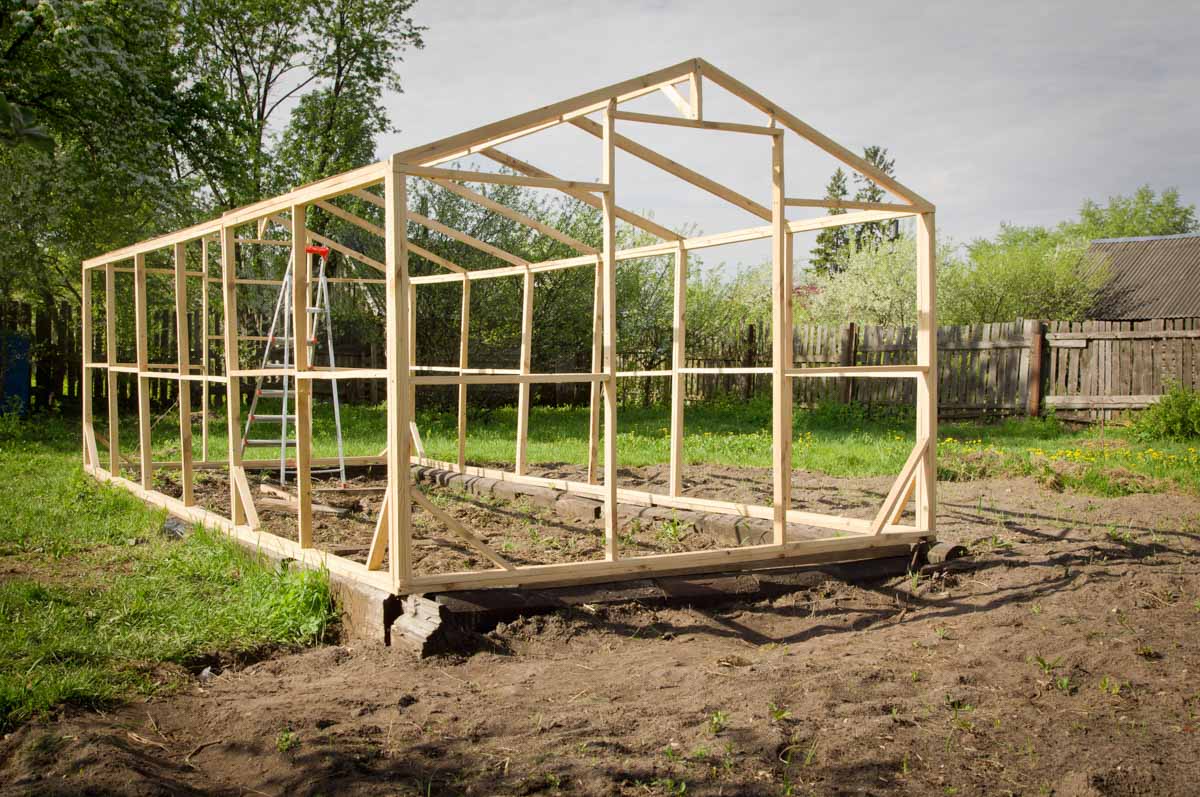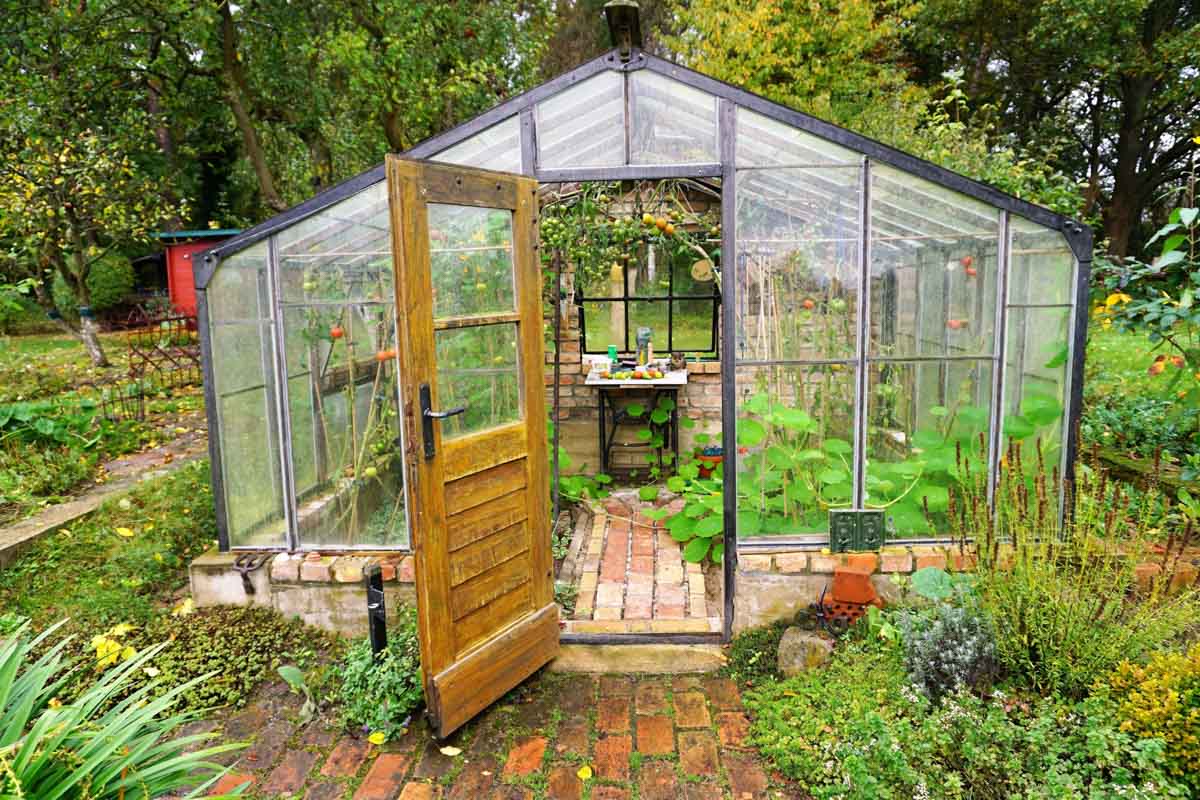Greenhouse gardening can be a daunting task for beginners. There are so many things to take into consideration before you even start planting!
This comprehensive step-by-step guide is designed to help first time greenhouse gardeners make the most of their experience.
We’ll cover everything from choosing the right greenhouse to which plants work best in this type of environment.
So whether you’re ready to jump in head first or just dipping your toes in, read on for lots of practical advice to get you started.
Why Grow in a Greenhouse?
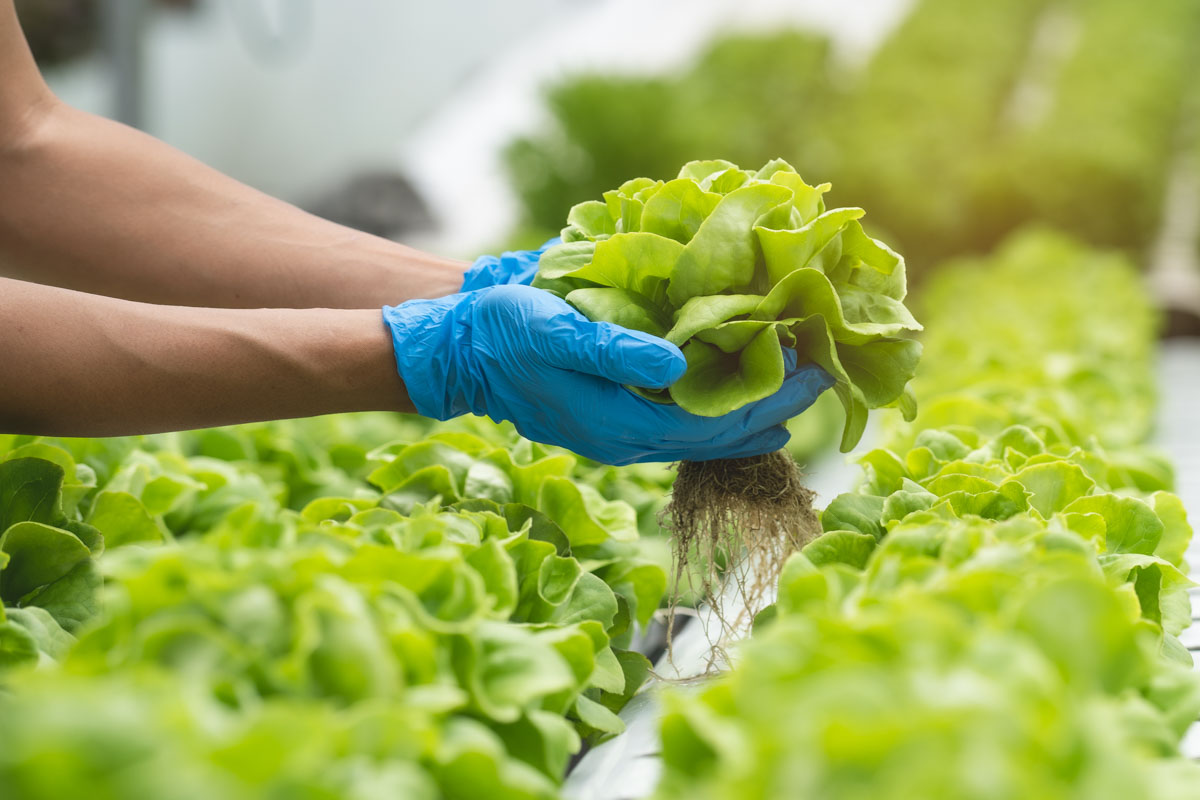
There are many reasons to grow plants in a greenhouse.
Perhaps the most obvious benefit is that you can extend the growing season! With a greenhouse, you can get crops started earlier in the spring and keep them going later into the autumn.
In fact, if you manage your greenhouse correctly, growing in a greenhouse allows you to garden year-round.
No matter what the weather is like outside, you can always find a comfortable temperature to grow inside your greenhouse. This means you can have fresh produce all year long, which can be a real lifesaver during the winter months.
Another big benefit of growing in a greenhouse is that it allows you to grow crops that might struggle to grow or do well when grown outside.
Although it is possible to grow special breeds of cucumbers, melons and chillies outside, most varieties of these crops will only grow well under cover – and those are just a couple of examples.
Greenhouses for Beginners: How to Choose the Right Greenhouse
There are a few things you need to consider when choosing a greenhouse.
Size
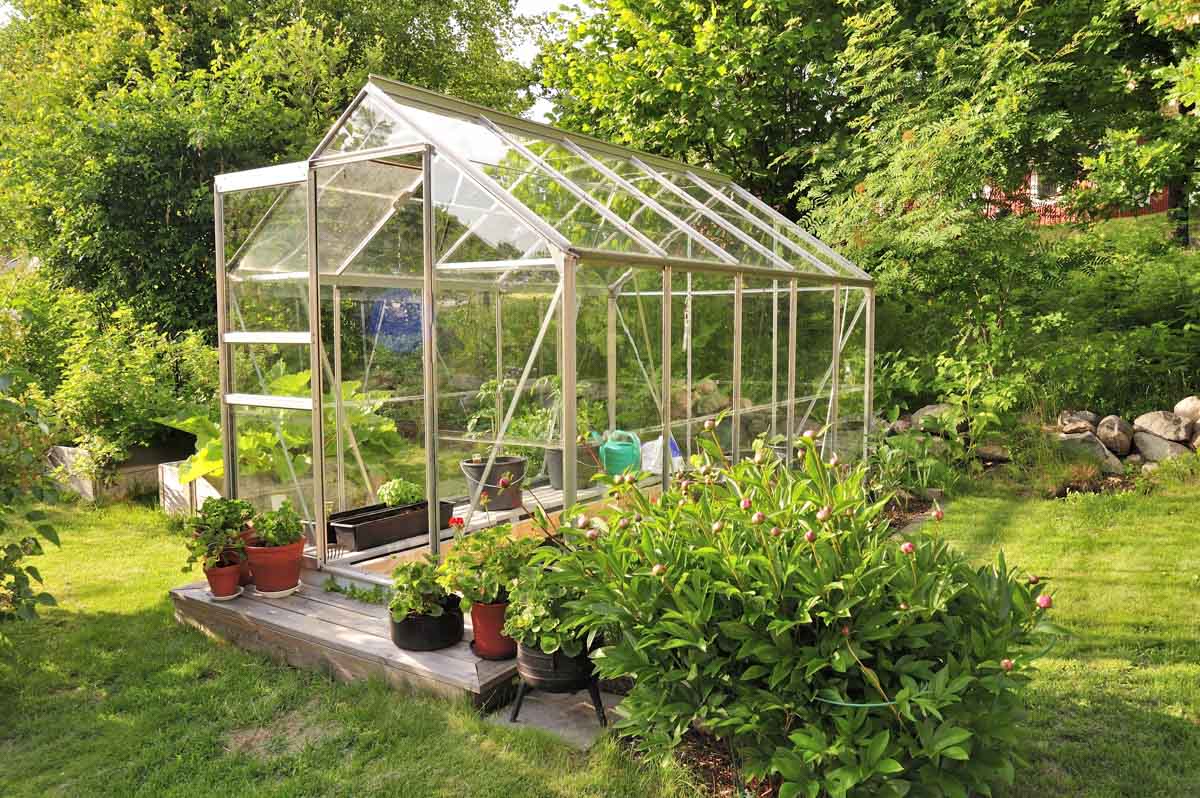
The first thing to think about is size. Work out how big the space available for your greenhouse is. Is there plenty of space around it?
Size-wise, you want to choose a greenhouse that’s big enough to fit all of your plants, but not so large that it becomes difficult to manage.
That said, most people’s gripe is that their greenhouse isn’t big enough – you wouldn’t want to buy a small greenhouse as a beginner grower and have to replace it with a bigger one a year later.
Polytunnel / Lean To or Freestanding Greenhouse?
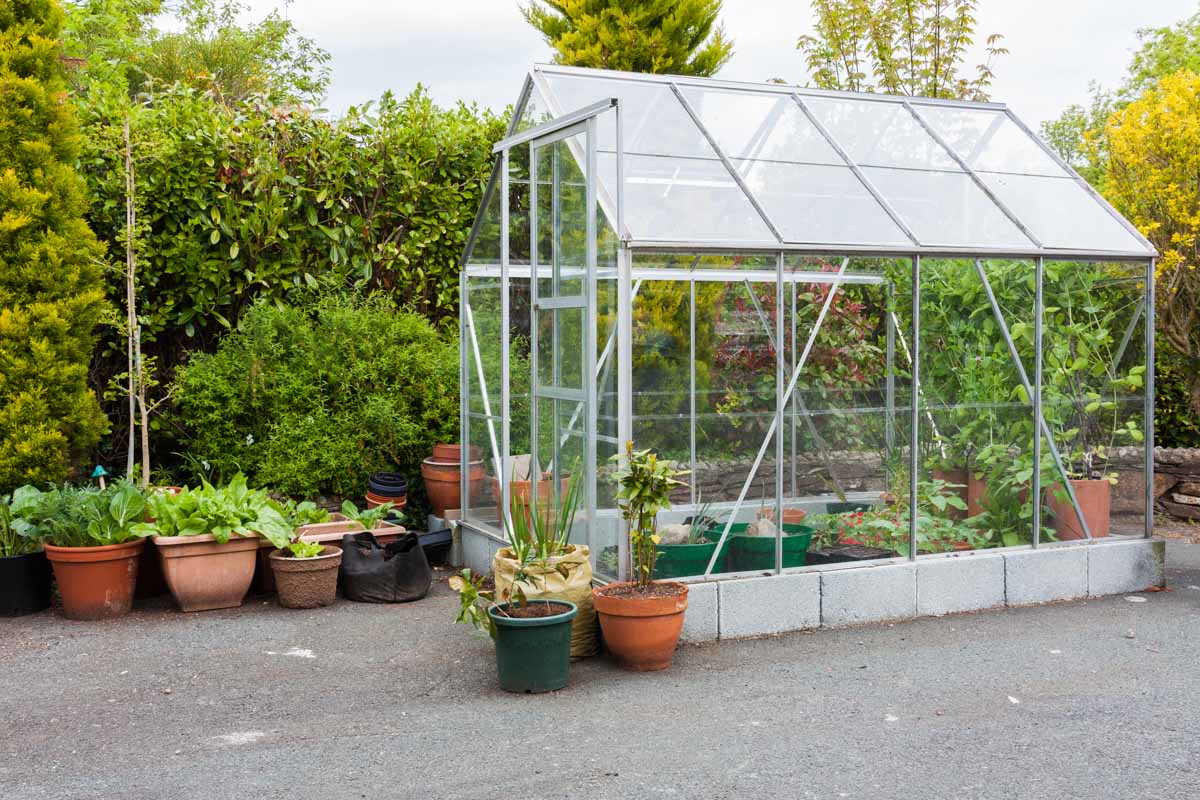
Another important factor is the type of greenhouse.
There are three main types: polytunnels (hoop houses), lean-to greenhouses (attached greenhouses) and free-standing greenhouses.
Polytunnels are the simplest type – they’re just a series of metal hoops covered in plastic sheeting. They’re inexpensive to build, but they offer limited space and aren’t very sturdy.
Lean-to greenhouses are attached to the side of your house or another building. This type is more expensive than a polytunnel, but it offers more space and is more durable.
Free-standing greenhouses are generally the most expensive option, but they offer the most flexibility in terms of size and location.
Polycarbonate, Glass or Plastic Greenhouse?
The next thing to think about is the type of material your greenhouse will be made out of. The three most common options are polycarbonate, glass, and plastic.
Polycarbonate Greenhouse
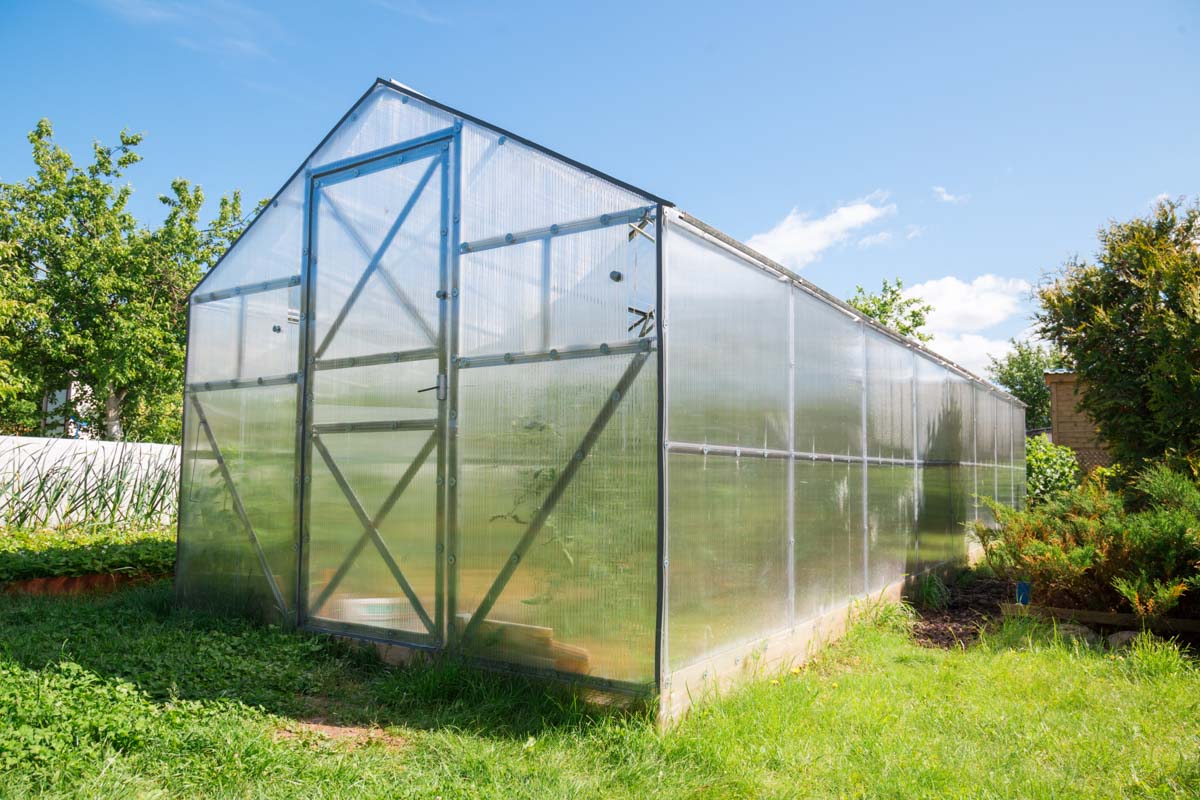
Polycarbonate greenhouses are fast becoming the most popular choice for new greenhouses – they’re affordable, durable and help diffuse light within the greenhouse.
Made out of double plates of polycarbonate, they isolate 40 % better than glass, which helps the temperature in the greenhouse to stay stable
Polycarbonate greenhouses are a great option for greenhouse gardening beginners, because they’re easy to set up and maintain and can be very strong.
Price-wise, polycarbonate greenhouses are normally cheaper than traditional glass ones.
Glass Greenhouses
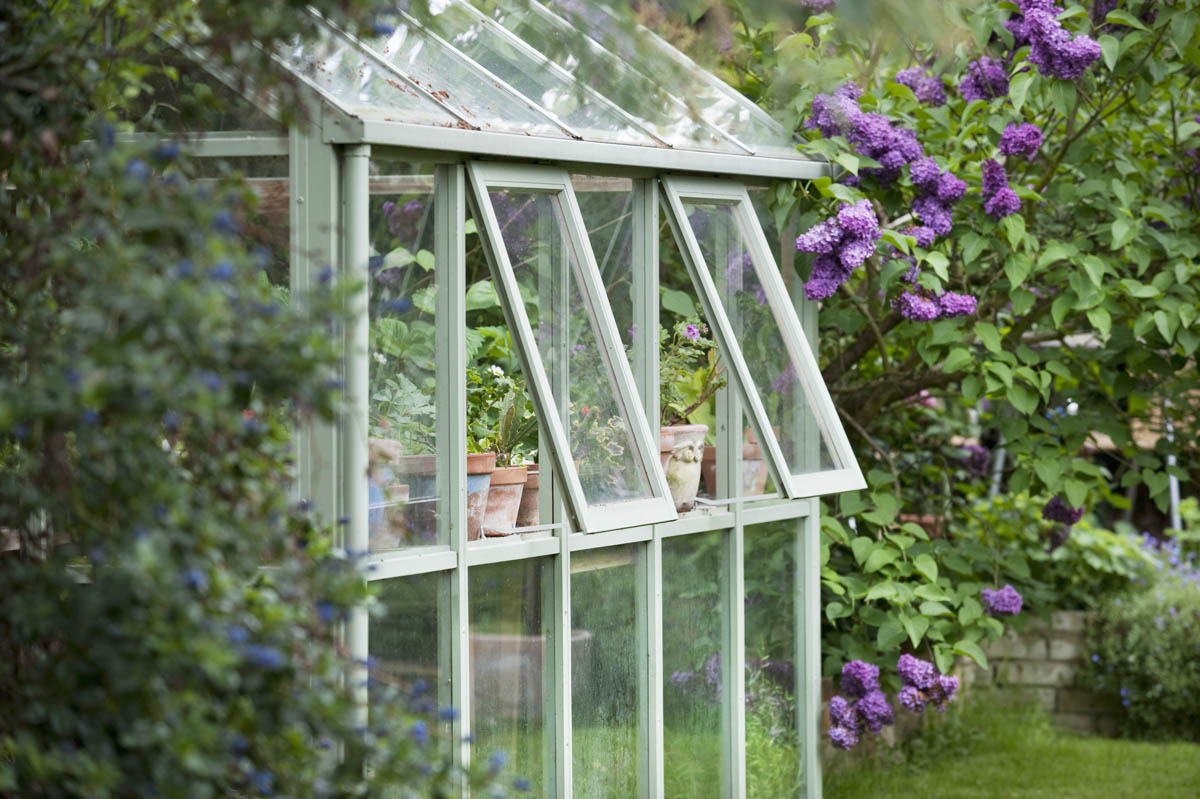
Glass greenhouses are more expensive than polycarbonate greenhouses, but they offer a traditional greenhouse look. They’re a great option for greenhouse gardening beginners, because retailers tend to have the widest range of glass greenhouses.
However, they’re not as strong or resilient as polycarbonate greenhouses and can be more difficult to maintain.
Read Next: Should You Choose Glass or Polycarbonate Glazing?
Plastic Greenhouses

Plastic greenhouses are the cheapest option, but they’re not as durable as the other two options and some would say that they don’t look very nice.
If you want to try your hand at growing in a greenhouse before committing to a significant expenditure, a plastic greenhouse may be a good option.
Expect to replace your plastic greenhouse every 1-2 years.
Choosing Your Frame – Wood, Aluminium or Steel?
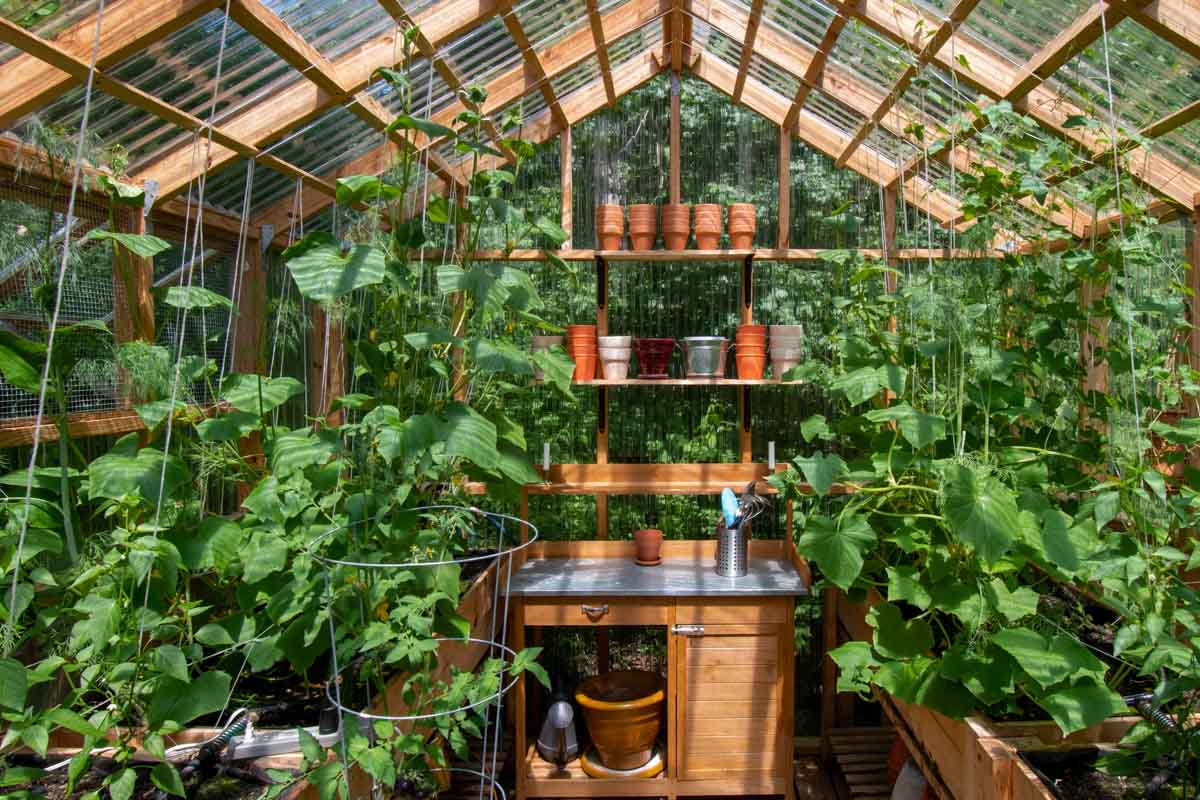
The next thing you’ll need to decide is what type of frame your greenhouse will have. The three most common options are wood, aluminium and steel.
Wooden frames might look more attractive but they’re also heavier and can be less weather resistant. You’ll need to maintain your wooden greenhouse to keep it in good shape for the years to come.
Aluminium greenhouse frames are cheaper than wooden greenhouse frames, but they’re not as attractive. They can also corrode over time, which can cause problems with the greenhouse.
Steel greenhouse frames are the most expensive but also the weightiest and (if looked after properly), the most durable. They’re a particularly good option if you’re willing to see your greenhouse as a long-term investment or if you have a particularly windy plot.
Read Next: Which Material Should You Choose for Your Frame
Choose The Right Location For Your Greenhouse
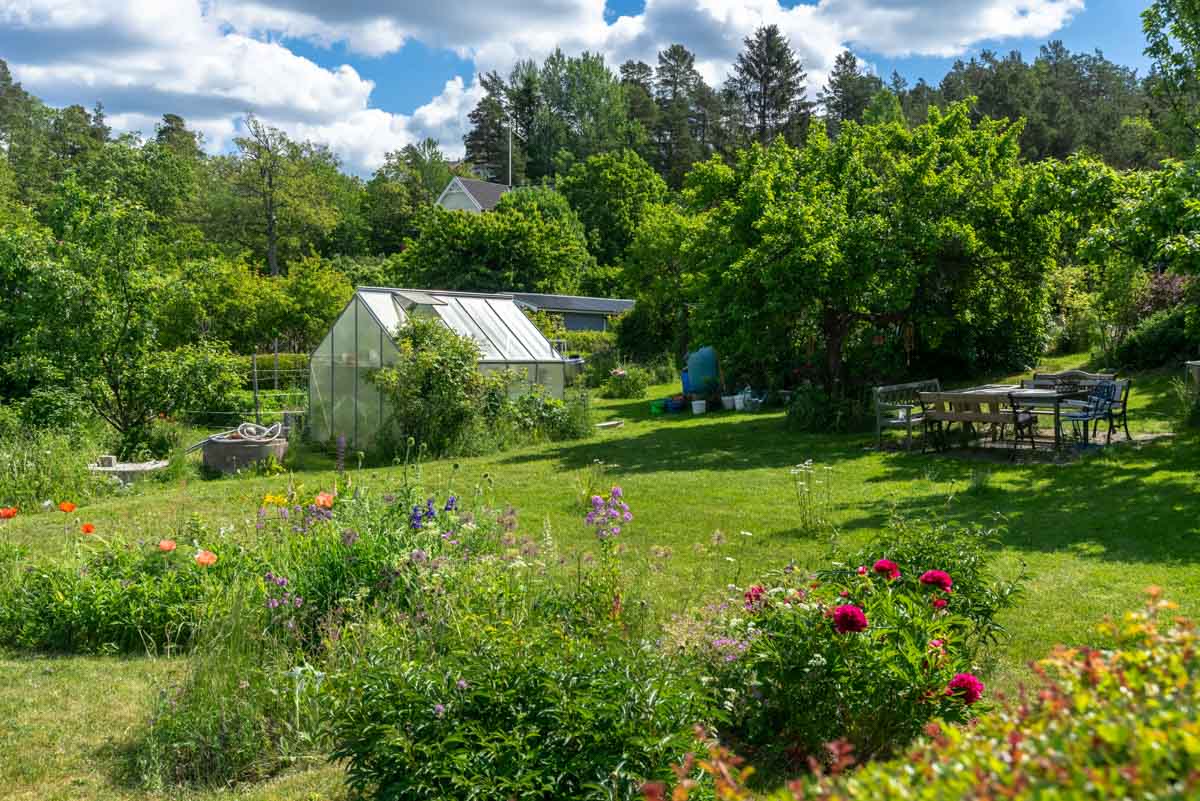
The next thing you need to think about before building your greenhouse is the location.
You want to choose a spot that gets plenty of sunlight and has good drainage.
If possible, choose a south-facing or east-to-west facing location so that it can get as much sun as possible throughout the year – particularly during the winter months.
If you can, choose a position that receives light from all sides – so not tucked into a corner of your garden.
Don’t worry if that’s not possible though, these are just guidelines, not hard and fast rules.
If you plan on running electricity to your greenhouse, make sure the greenhouse is close to your house so you can easily hook it up.
Ideally, you want the greenhouse to be relatively close to your house anyway – you’ll be spending a lot of time in there and you want to make sure you have easy access.
Read Next: How to Choose the Position of Your Greenhouse
Building Your Greenhouse

We won’t go into too much detail about the building stage in this guide as it’s a complex process that we have written about separately. Instead, here are a few top tips.
- The foundation should be sturdy, level, and well-draining.
- Use treated wood or metal for the framing – this will help protect it from the elements.
- Make sure all of your joints are sealed tightly with waterproof sealant.
- Cover the greenhouse with a good quality greenhouse film. This will help keep the heat in and the rain out.
- Make sure to install a ventilation system, so that hot air can escape.
- Install a heating system, if necessary.
- Put down a layer of insulation on the floor, to help keep the heat in.
Greenhouses for Beginners: Tips and Accessories
Once you’ve decided on the type of greenhouse, you need to think about the features you want it to have. Some important things to consider include ventilation, heating, and lighting.
If you live in a cold climate, you’ll need a greenhouse with a good heating system. If you live in a hot climate, you’ll need one with good ventilation. And if you live in a place that gets a lot of sunlight, you’ll need a greenhouse with good shading.
Growing in the Ground vs Growing in Containers?
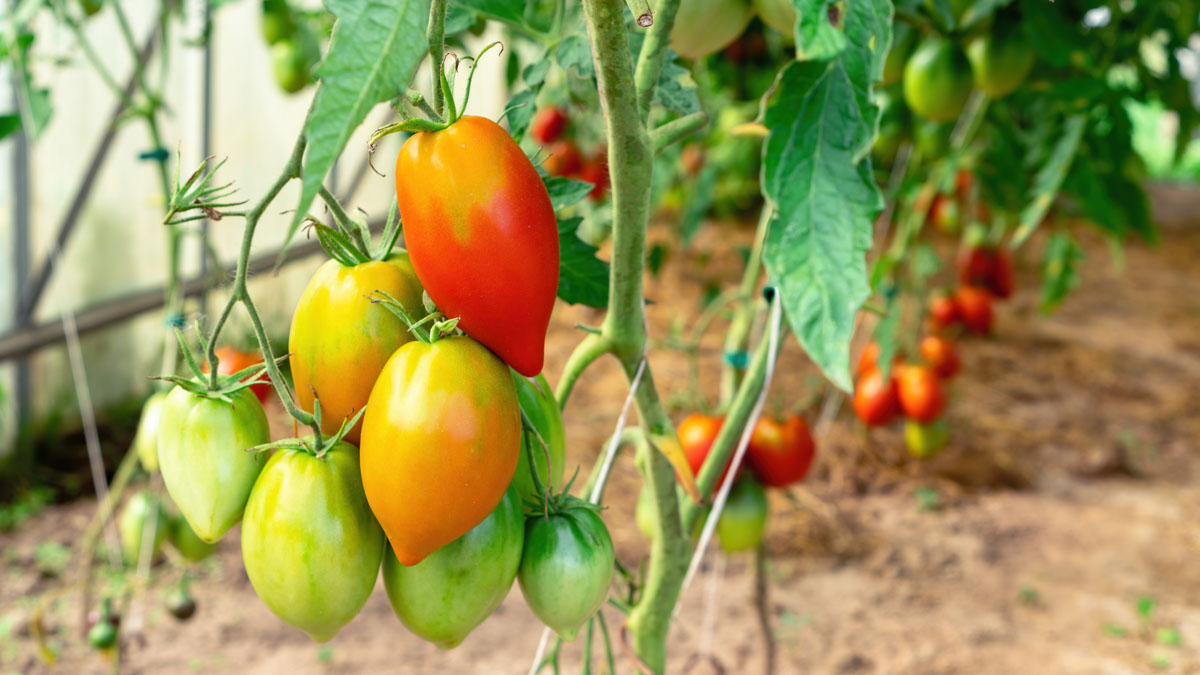
One of the first decisions you’ll need to make when starting a greenhouse garden is whether to grow your plants in the ground or in containers.
There are a number of benefits to growing plants in containers. The most obvious is that it’s easier to move your plants around if they’re in containers. This is especially helpful if you have a small greenhouse.
Another benefit of growing plants in containers is that you can control the soil conditions. This is important if your greenhouse is in a climate that’s not ideal for growing plants. By using containers, you can create the perfect soil environment for your plants.
The main downside of growing plants in containers is that it takes up more space (unless you make good use of greenhouse staging). If you’re limited on space, you might want to grow your plants in the ground.
Type of Soil for Your Greenhouse?
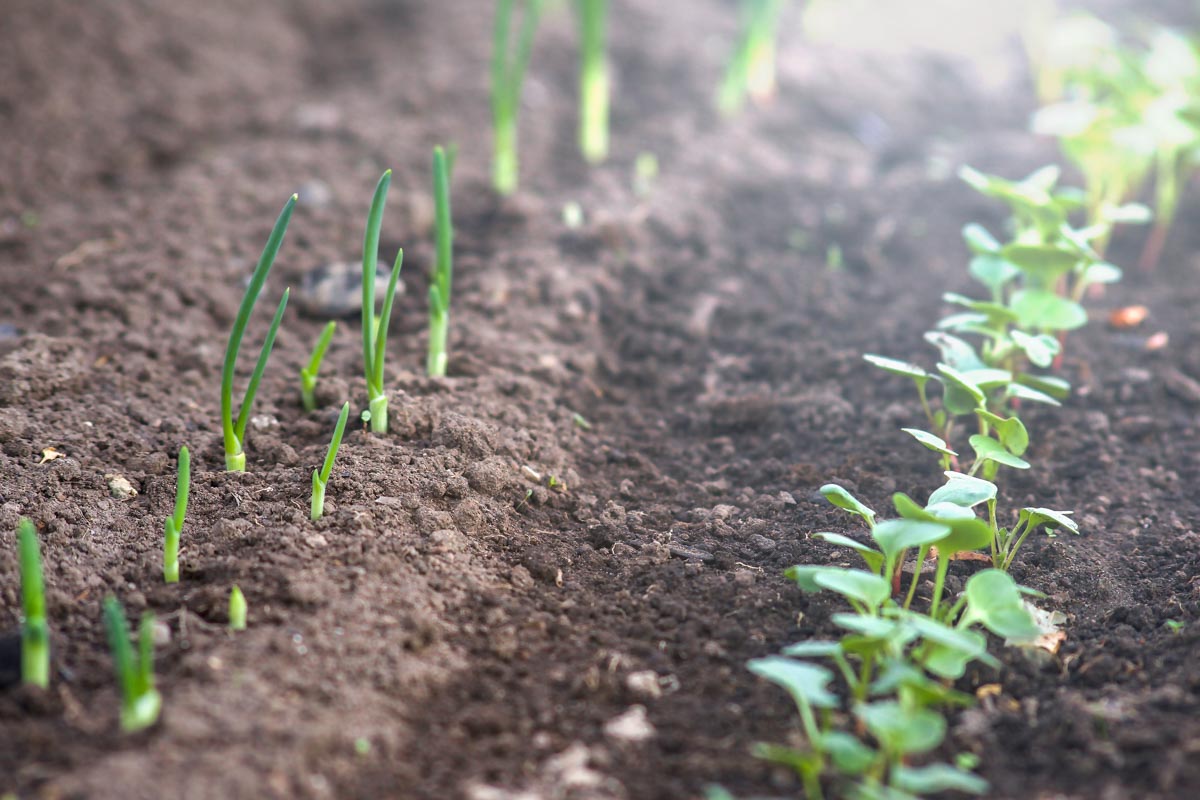
Greenhouse gardening works best when you use a lightweight soil mix. This type of soil is easy to work with and it drains well.
There are a number of different types of soil mixes that you can use for greenhouse gardening. Here is one recipe for a lightweight greenhouse soil mix:
60% Topsoil
30% Compost
10% Peat moss (or a sustainable alternative such as coconut coir), perlite or vermiculite.
You can also buy pre-made greenhouse soil mixes at most garden centers.
If you’re using containers for your plants, you’ll need to use a potting mix that is designed for greenhouse gardening. This type of potting mix will have the right balance of nutrients and drainage for greenhouse plants.
Heating Your Greenhouse
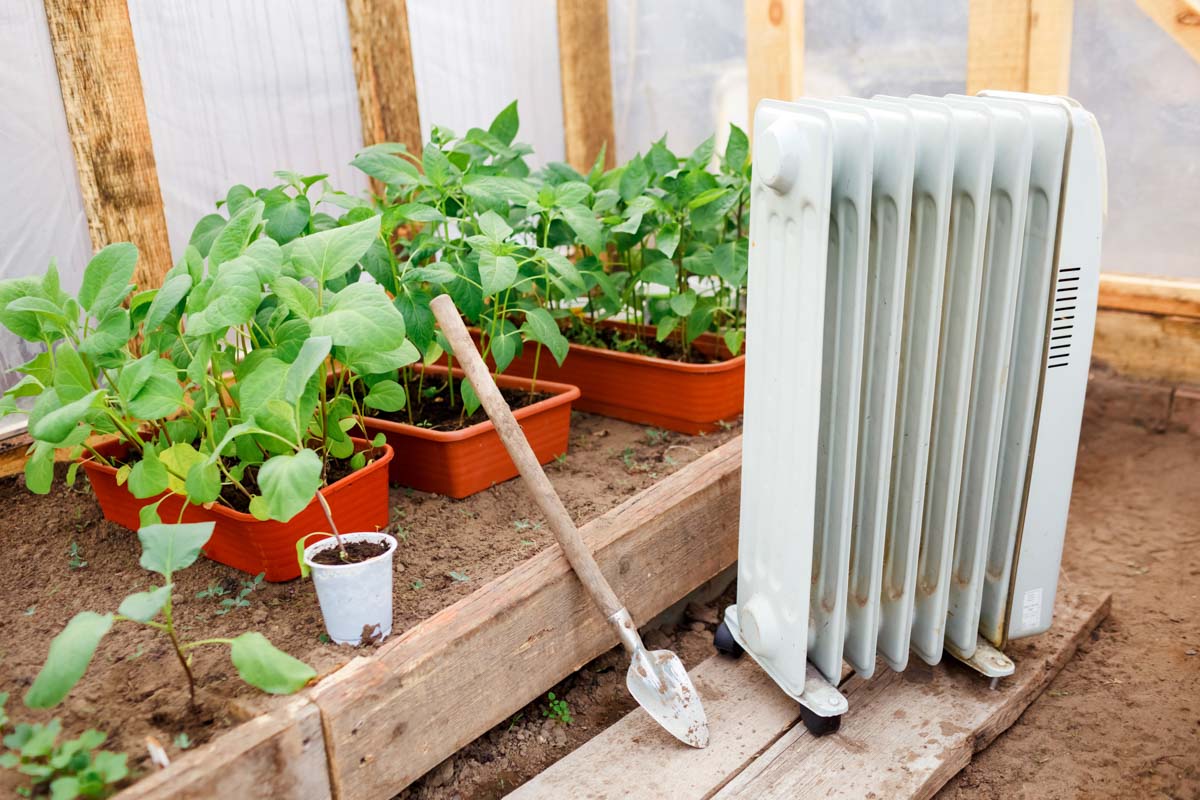
If you’re living in a cold climate, you may want to consider installing a heating system in your greenhouse.
The most common of these is the electric greenhouse heater. These heaters are easy to use and they come in a variety of sizes.
Another option is the propane greenhouse heater. This type of heater uses propane gas to generate heat. It’s a bit more expensive than the electric greenhouse heater, but it does provide more heat.
If you’re looking for a greenhouse heater that’s eco-friendly, you might want to consider a solar greenhouse heater. This type of heater uses energy from the sun to generate heat.
While they are more expensive than other greenhouse heaters, they are a great way to reduce your greenhouse’s carbon footprint.
Ventilation System
A ventilation system is important in any greenhouse, but it’s especially important in hot climates. Without proper ventilation, the greenhouse can quickly become too hot and humid for plants to thrive.
There are a variety of different ventilation systems you can use in your greenhouse.
The most common is a combination of simple roof and side vents. A roof vent allows hot air to escape from the top of the greenhouse, while a window vent allows fresh air to enter at the bottom – most greenhouses come with these included.
Another option is an exhaust fan. This type of fan draws hot air out of the greenhouse and replaces it with fresh air.
It’s a good idea to have both an exhaust fan and a roof vent. This will ensure that your greenhouse stays cool, even on the hottest days.
Insulation
One of the best ways to keep your greenhouse warm in the winter is to install insulation on the floor. This will help keep the heat from your greenhouse heater, or from the sun, trapped inside.
Waterproofing and Greenhouse Films
If you live in a climate that gets a lot of rain, it’s important to waterproof your greenhouse. This will protect the inside of the greenhouse from getting wet and from developing mold or mildew.
There are a number of different ways you can waterproof your greenhouse. The most common is to use a waterproof membrane. This is a plastic sheet that you install over the top of the greenhouse. It’s important to make sure the membrane is sealed tightly against the framing, so there are no leaks.
Greenhouse Shelving / Greenhouse Staging
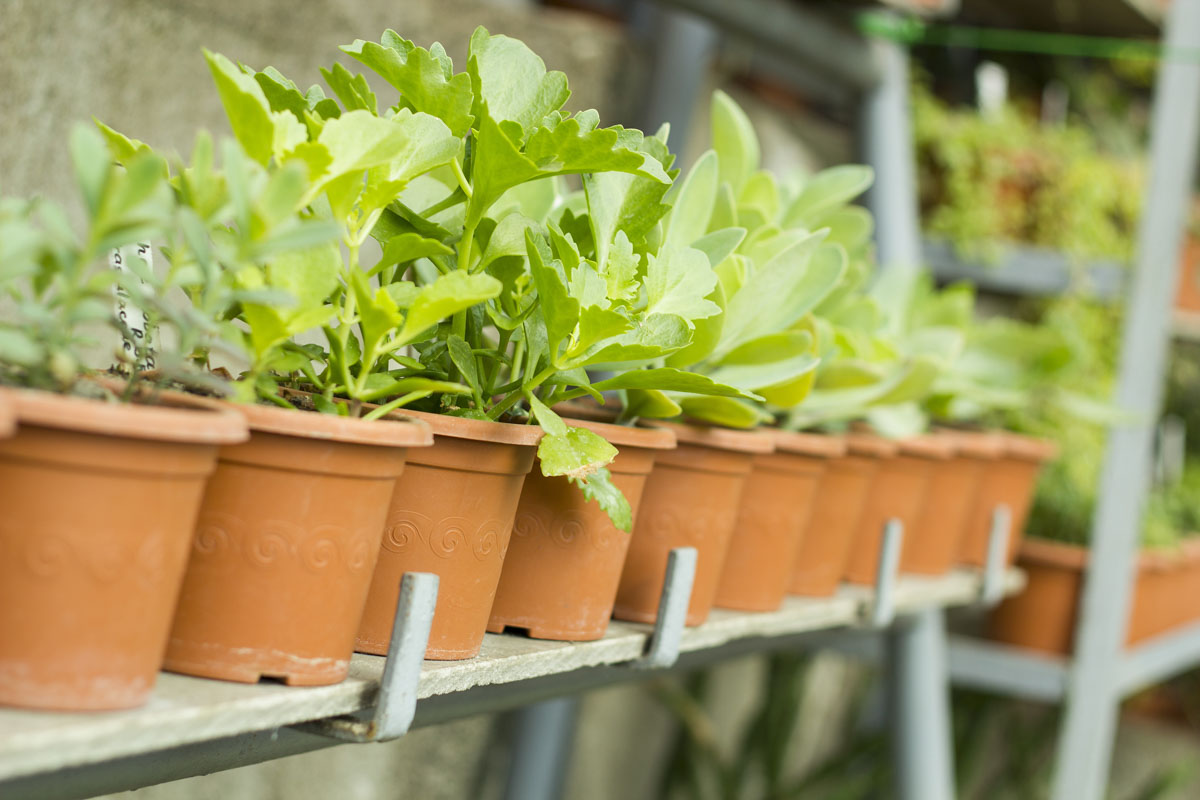
One of the best ways to organize your greenhouse is to install some shelves. This will give you a place to store your plants, tools, and other greenhouse supplies.
The most common type of greenhouse shelves are made of wood. This type of shelf is easy to install and it’s affordable. Another option is the metal greenhouse shelf. This type of shelf tends to be stronger and it lasts longer.
If you’re looking for a greenhouse shelf that’s eco-friendly, you might want to consider a bamboo greenhouse shelf. Bamboo is a renewable resource and it’s biodegradable.
Greenhouse Lighting
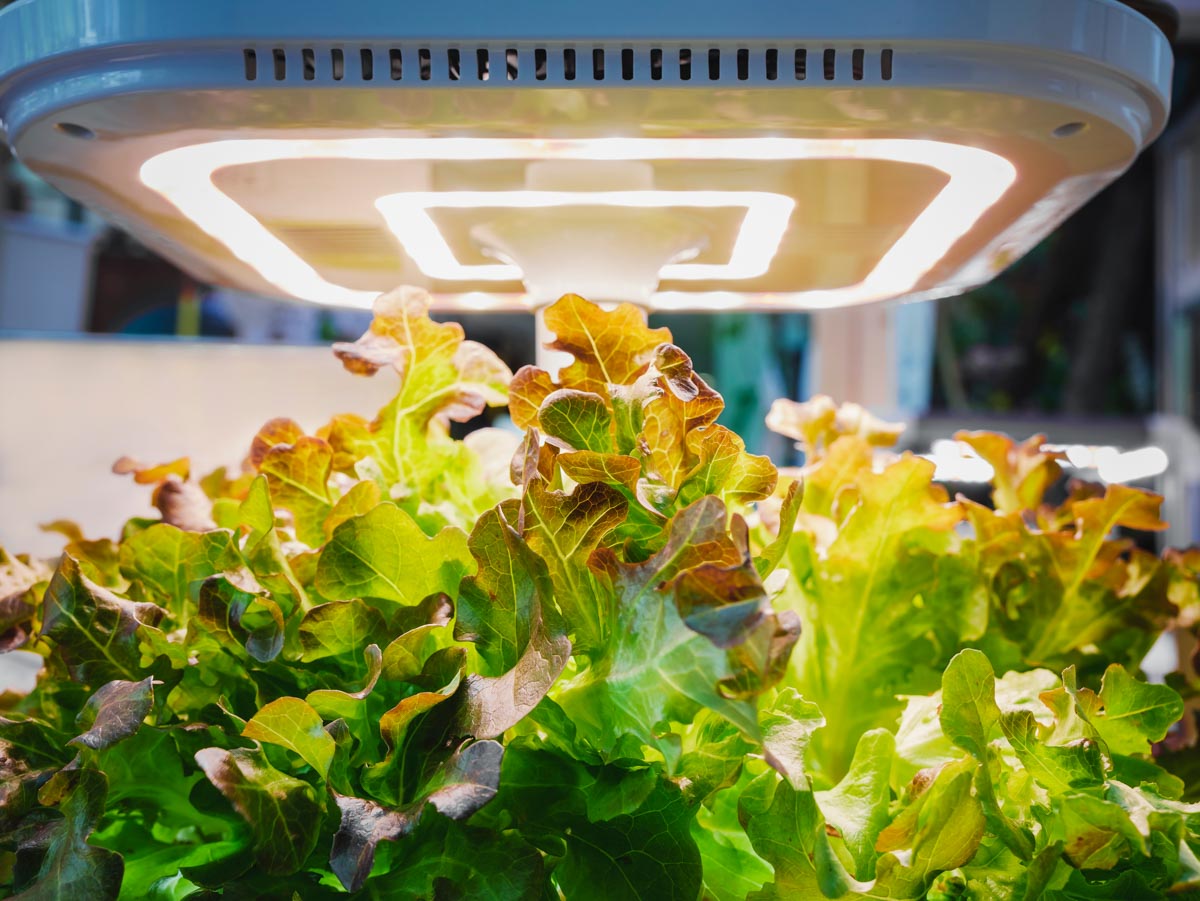
One of the benefits of greenhouse gardening is that you can grow plants all year round.
Although many winter crops can thrive in the darker months, if you want to extend the growing season of other crops, you’ll need to install some greenhouse lighting.
There are a variety of different types of greenhouse lighting you can choose from.
The most common is the fluorescent greenhouse light, which is affordable and lasts a long time. Another option is the LED greenhouse lights, which use less energy than fluorescent lights and last longer.
If you’re looking for a greenhouse light that’s eco-friendly, you might want to consider an LED solar greenhouse light. This type of light is powered by the sun and it doesn’t use any electricity.
Greenhouses for Beginners: Finishing Touches
Once the greenhouse is constructed, you’ll need to add a few finishing touches. Here are some ideas:
- Add shelves and pegboards to store your tools and plants.
- Install a rainwater harvesting system to collect rainwater for watering your plants.
- Hang a thermometer and hygrometer to monitor the temperature and humidity levels.
- Add a greenhouse heater, if necessary.
- Install grow lights to provide extra light during winter months.
- Add a fan or ventilation system to help circulate the air.
The final step is to put plants in your greenhouse and enjoy!
Now that you’ve read our comprehensive guide on greenhouse gardening for beginners, you’re ready to start building your own greenhouse.


